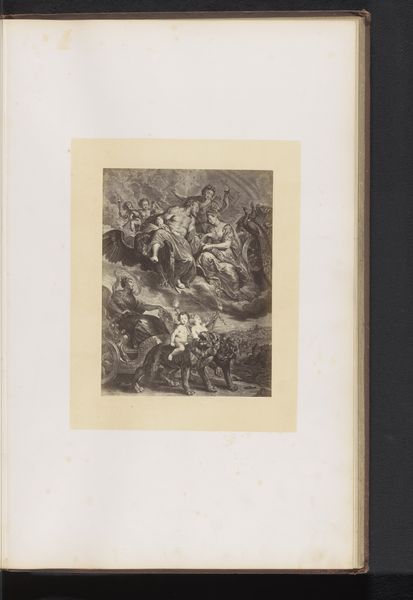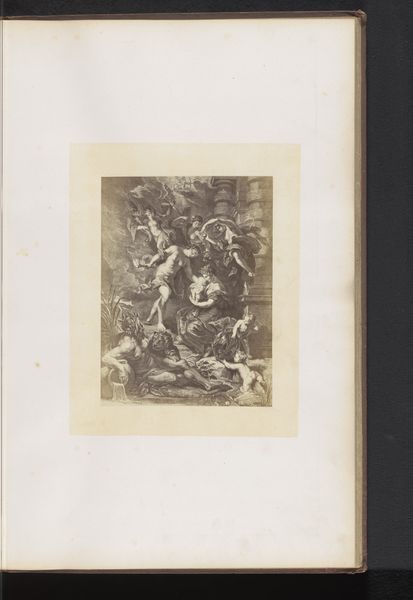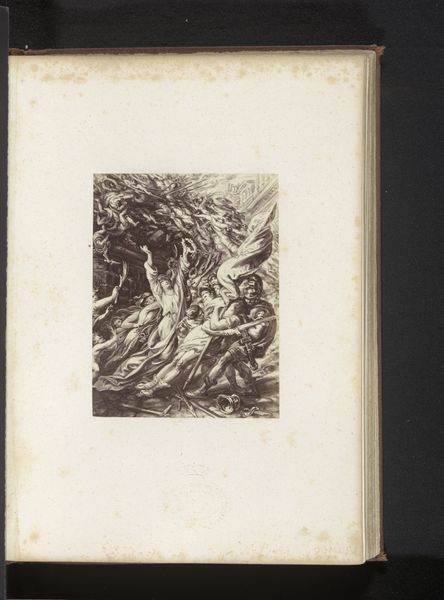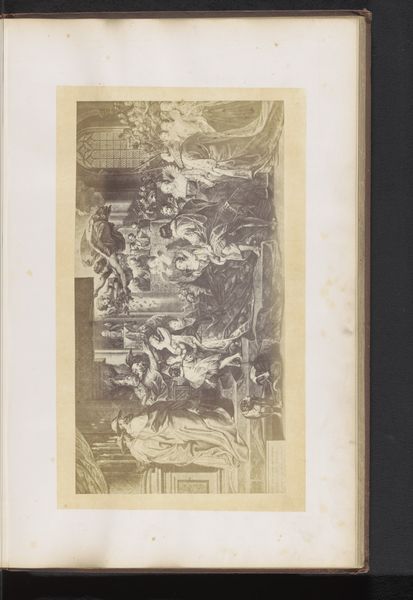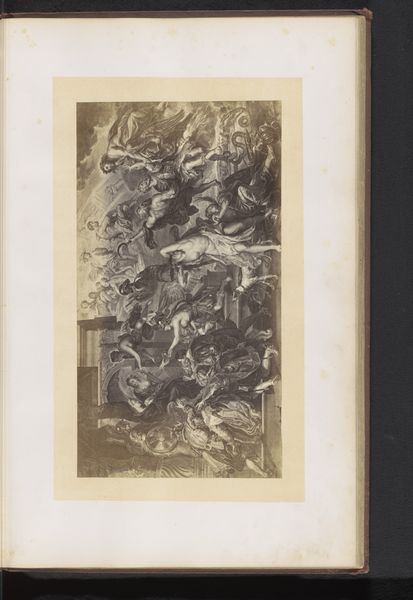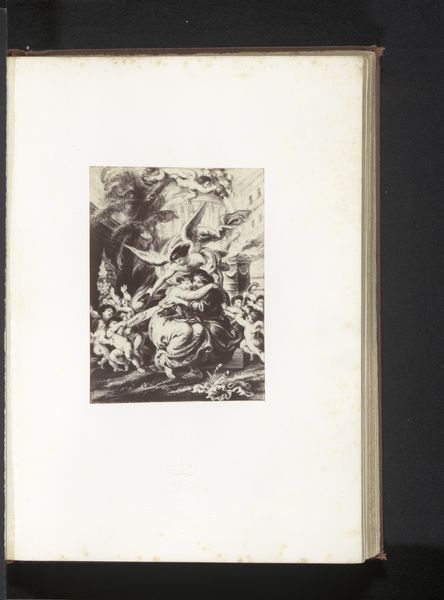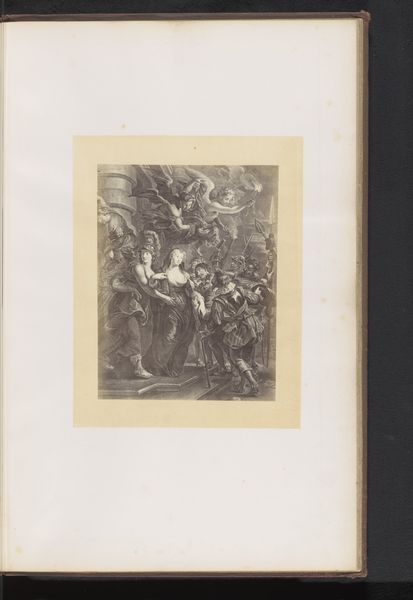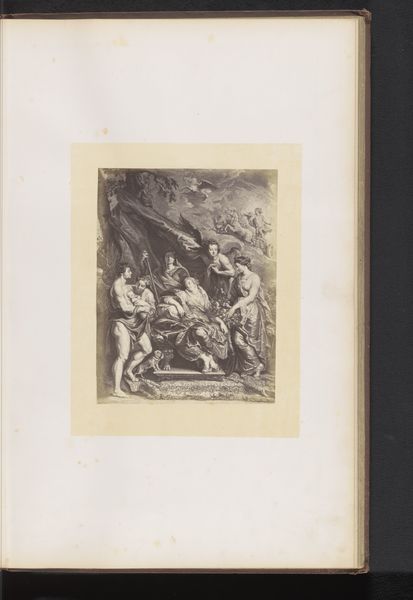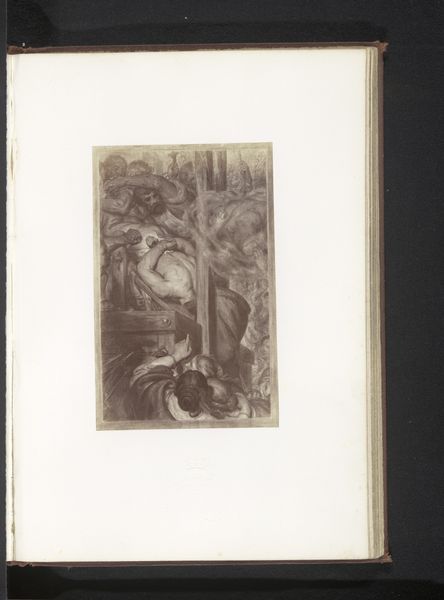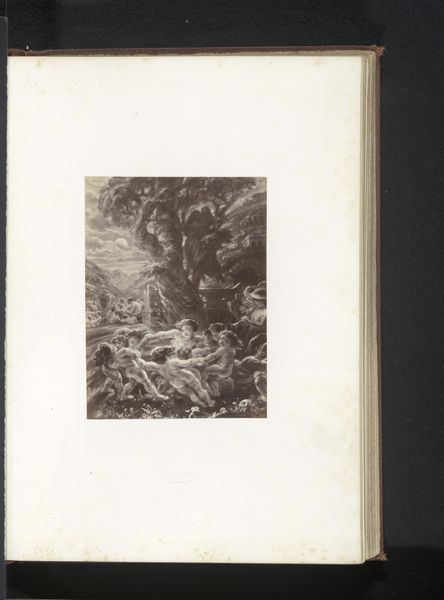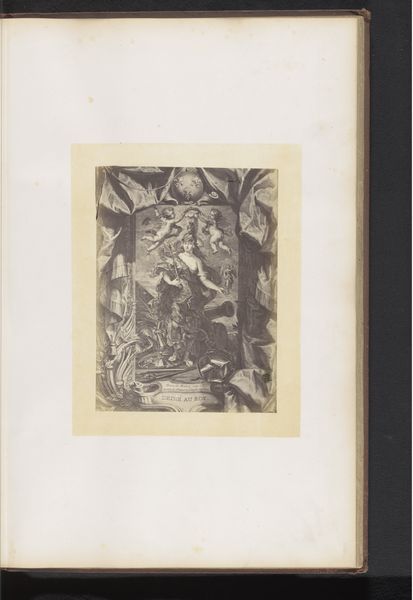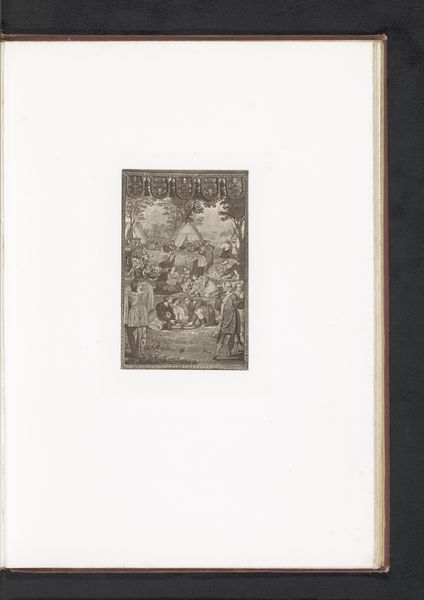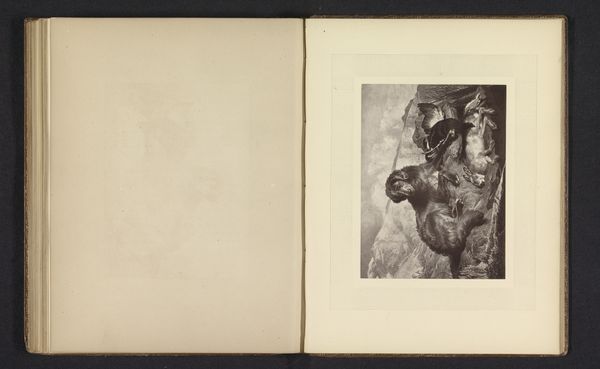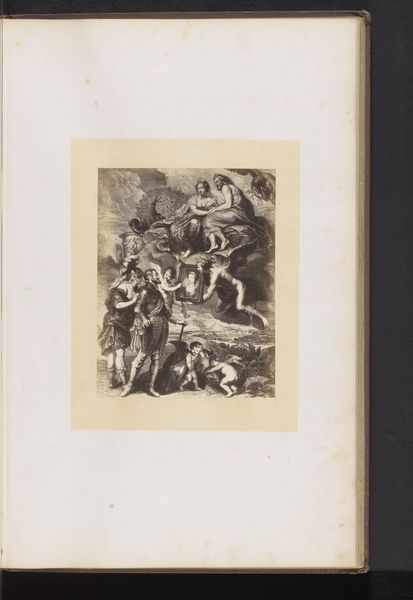
Fotoreproductie van een gravure van Verzoening van Maria de'Medici en Lodewijk XIII door Jean-Marc Nattier, naar het schilderij door Peter Paul Rubens before 1864
0:00
0:00
Dimensions: height 207 mm, width 158 mm
Copyright: Rijks Museum: Open Domain
Curator: It has a rather chaotic feel, wouldn't you say? A swirling mass of figures, all striving for attention in a monochromatic wash. Editor: Indeed! The image we're looking at is a photo reproduction of an engraving made before 1864 by Dechamps et Cie. after Jean-Marc Nattier’s engraving of Peter Paul Rubens’ painting, “Reconciliation of Maria de' Medici and Louis XIII.” It's part of the Rijksmuseum collection. The engraving captures a pivotal moment in French history and royal relations. Curator: Before we get to the historical backdrop, what strikes me most is the almost overwhelming sense of movement created by the composition. The eye struggles to find a point of rest. It’s Baroque drama at its most energetic, even frenetic. Editor: This dramatic quality stems directly from the subject matter. Rubens’ original was a commissioned work to smooth over some rather rough political waters, after Marie de Medici was exiled by her son, Louis XIII. This reconciliation, however symbolic, aimed to project an image of restored harmony to the French court and its subjects. Curator: So the theatricality isn’t accidental then; it is actually embedded in the artwork's very purpose. All those swirling figures—angels, mythological characters—serve as symbolic witnesses to the event, a staged performance of forgiveness, effectively projecting power. What I find interesting is how this engraving tries to render the depth and colorism of Rubens' painting into a rather constrained grey-scale, which somehow amplifies the dynamism. Editor: That tension, the struggle between capturing the grand gesture in the absence of full chromatic information, certainly does speak to the complexities of reproduction, the choices artists make when translating across mediums. The formal elements—the strong diagonal lines, the contrasting areas of light and shadow—are tools used here to amplify a specific ideological goal. Curator: I agree. The artist successfully managed to distill the political intentions embedded in the allegory through skillful formal decisions. The Baroque opulence, now mediated through print and photography, lends an interesting depth of field. Editor: It leaves me pondering how the shift from oil paint to engraving to photography changes the artwork's public function, or perhaps reasserts it in new cultural spaces.
Comments
No comments
Be the first to comment and join the conversation on the ultimate creative platform.
